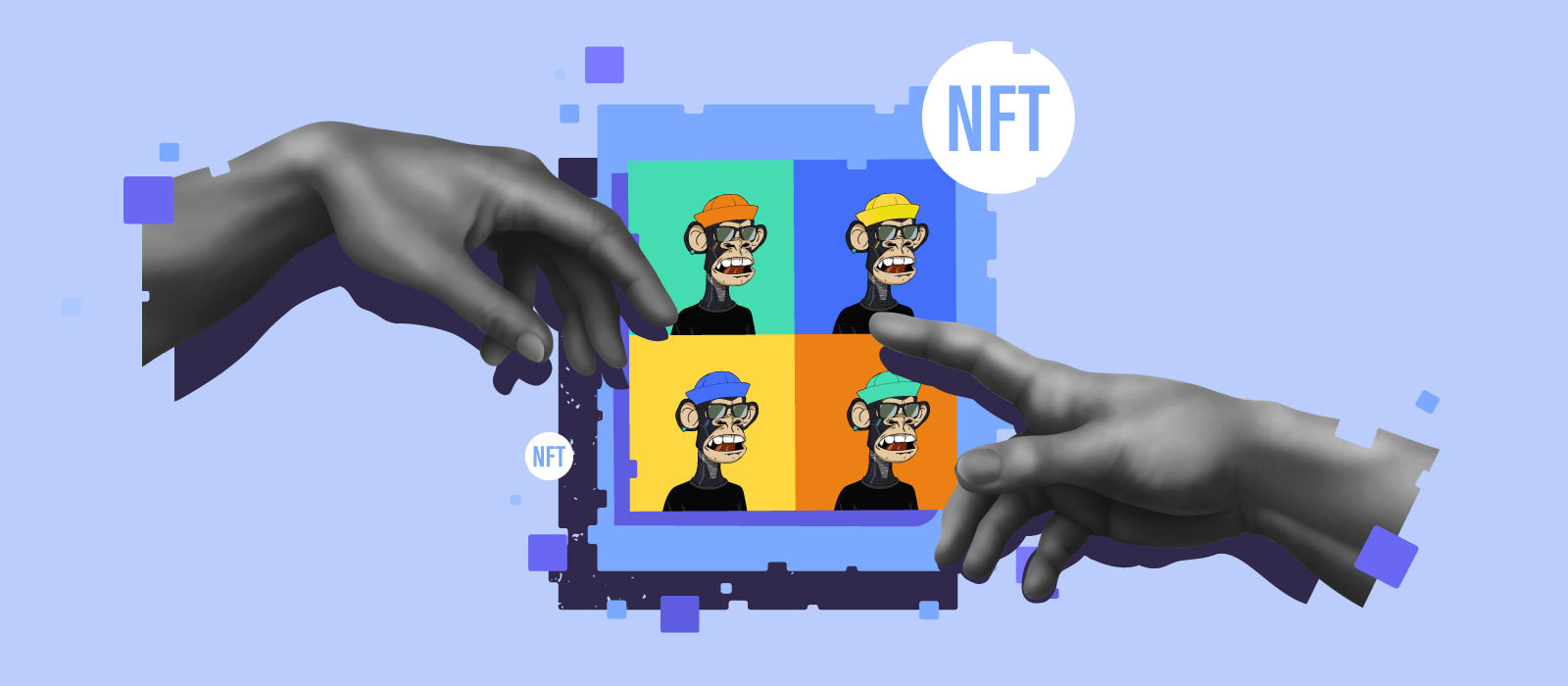Unlock the Benefits of an NFT Marketplace in Magento2

Non-fungible tokens (NFTs) are digital assets that are unique and not interchangeable. NFTs are used in a wide range of industries, including gaming, music, art, and collectibles. An NFT marketplace is a platform where users can buy and sell these unique tokens. With the rise in popularity of NFTs, many businesses are looking to integrate an NFT marketplace into their existing online store. Magento2 is one of the most popular eCommerce platforms, and it is possible to create an NFT marketplace using Magento2. In this article, we will look at the benefits of an NFT marketplace, how to set up an NFT marketplace in Magento2, and best practices for optimizing your Magento2 NFT marketplace.
What is an NFT Marketplace?
An NFT marketplace is an online platform that facilitates the buying and selling of non-fungible tokens (NFTs). NFTs are unique digital assets, such as artwork, music, collectibles, and gaming items, that are stored on a blockchain. NFTs are becoming increasingly popular, and an NFT marketplace allows users to buy, sell, and trade these digital assets.
An NFT marketplace is different from a traditional online marketplace in a few key ways. First, an NFT marketplace is powered by blockchain technology, which ensures that all transactions are secure and irreversible. Second, an NFT marketplace hosts digital assets, which are unique and not interchangeable. This allows users to buy and sell unique items without worrying about counterfeits or knock-offs. Finally, an NFT marketplace often has lower fees than traditional online marketplaces, as there is no need for a third-party payment processor.
Benefits of an NFT Marketplace
There are many benefits to having an NFT marketplace in Magento2. First, it is a great way to attract new customers. As NFTs become increasingly popular, having an NFT marketplace on your site can help you stand out from the competition.
Second, an NFT marketplace can help you increase your revenue. NFTs are typically sold at a premium price, so you can make a good profit from selling these digital assets. Furthermore, you can leverage the blockchain technology to create additional revenue streams, such as commissions from trading fees or transaction fees.
Third, an NFT marketplace can help you build a stronger relationship with your customers. By offering unique digital assets, you can create a sense of exclusivity and loyalty among your customers. This can help you build a stronger bond with your customers and encourages them to keep coming back.
Finally, an NFT marketplace can help you build trust with your customers. As the transactions are powered by blockchain technology, your customers can be sure that their transactions are secure and irreversible. This can help you build trust with your customers and ensure that they feel safe when making purchases on your site.
Setting up an NFT Marketplace in Magento2
Setting up an NFT marketplace in Magento2 is relatively easy. The first step is to install the Magento NFT Marketplace extension. This extension allows you to create an NFT marketplace on your existing Magento2 site. Once the extension is installed, you can start setting up your NFT marketplace.
First, you need to decide which digital assets you want to offer on your marketplace. You can offer artwork, music, collectibles, or any other type of digital asset. Once you have decided which assets you want to offer, you can upload them to your site.
Next, you need to set up the payment gateway for your NFT marketplace. You can use a third-party payment processor, such as PayPal or Stripe, or you can use a blockchain-based payment gateway, such as Ethereum or Bitcoin. Once you have set up the payment gateway, you can start accepting payments from your customers.
Finally, you can set up the rules for your NFT marketplace. You can set up rules for buying and selling, as well as rules for trading. You can also set up rules for setting prices, commissions, and fees. Once you have set up the rules, your NFT marketplace is ready to go.
Step-by-Step Guide to Integrating an NFT Marketplace in Magento2
If you are looking to set up an NFT marketplace in Magento2, here is a step-by-step guide to get you started.
- Install the Magento NFT Marketplace extension. This extension will allow you to create an NFT marketplace on your existing Magento2 site.
- Decide which digital assets you want to offer on your marketplace. You can offer artwork, music, collectibles, or any other type of digital asset.
- Upload the digital assets to your site. Make sure to follow best practices for security and privacy when uploading the assets.
- Set up the payment gateway for your NFT marketplace. You can use a third-party payment processor, such as PayPal or Stripe, or you can use a blockchain-based payment gateway, such as Ethereum or Bitcoin.
- Set up the rules for your NFT marketplace. You can set up rules for buying and selling, as well as rules for trading. You can also set up rules for setting prices, commissions, and fees.
- Test the NFT marketplace to make sure it is working properly.
- Launch the NFT marketplace and start selling digital assets.
Tips for Getting the Most Out of Your Magento2 NFT Marketplace
Once you have set up your Magento2 NFT marketplace, there are a few tips that you can use to get the most out of it.
First, make sure to promote your NFT marketplace. You can do this through social media, email marketing, and other online marketing strategies. This will help you attract more customers to your marketplace.
Second, make sure to keep the marketplace updated with the latest digital assets. This will help you stay ahead of the competition and attract more customers.
Third, be sure to use analytics to track the performance of your marketplace. This will help you identify areas of improvement and optimize your marketplace for better performance.
Finally, make sure to offer great customer service. This will help you build trust with your customers and ensure that they keep coming back.
Common Challenges and Solutions when Implementing an NFT Marketplace in Magento2
When setting up an NFT marketplace in Magento2, there are a few common challenges that you may encounter. Here are some of the most common challenges and solutions.
The first challenge is setting up the payment gateway. If you are using a third-party payment processor, you may need to set up additional security measures to ensure that the transactions are secure. You can use two-factor authentication and encryption to protect the payments.
The second challenge is setting up the rules for the marketplace. You may need to set up rules for buying and selling, as well as rules for trading. You may also need to set up rules for setting prices, commissions, and fees.
The third challenge is setting up the digital assets. You will need to make sure that the digital assets are secure and private, and that they are properly stored on the blockchain. You may also need to set up a system for verifying the authenticity of the digital assets.
Finally, the fourth challenge is setting up the user interface. You will need to make sure that the user interface is user-friendly and intuitive, so that customers can easily navigate the marketplace.
Security Considerations when Setting up an NFT Marketplace in Magento2
When setting up an NFT marketplace in Magento2, it is important to take security into consideration. Here are some security considerations that you should keep in mind.
First, you should make sure to use a secure payment gateway. This will help to ensure that all transactions are secure and irreversible. You should also make sure to use two-factor authentication and encryption to protect the payments.
Second, you should make sure to use a secure storage system for the digital assets. This will help to protect the digital assets from being stolen or lost.
Third, you should make sure to use a secure system for verifying the authenticity of the digital assets. This will help to ensure that the digital assets are unique and not interchangeable.
Finally, you should make sure to use a secure user interface. This will help to ensure that customers can easily navigate the marketplace and make secure transactions.
Different Platforms for Hosting an NFT Marketplace
When setting up an NFT marketplace, you have a few options for hosting it.
One option is to host the marketplace on your own website. This is a good option if you have an existing website or eCommerce platform. You can use the Magento NFT Marketplace extension to set up an NFT marketplace on your existing platform.
Another option is to use a specialized NFT marketplace platform. There are a few platforms that specialize in hosting NFT marketplaces, such as OpenSea and Rarible. These platforms are designed specifically for hosting NFT marketplaces, so they are easy to use and offer a range of features.
Finally, you can also use a blockchain-based platform, such as Ethereum or Bitcoin. These platforms are designed specifically for hosting digital assets, and they offer a range of features such as secure transactions and immutable storage.
Best Practices for Optimizing Your NFT Marketplace in Magento2
Once you have set up your Magento2 NFT marketplace, there are a few best practices that you can use to optimize it.
First, you should make sure to keep the marketplace updated with the latest digital assets. This will help you stay ahead of the competition and attract more customers.
Second, you should make sure to use analytics to track the performance of your marketplace. This will help you identify areas of improvement and optimize your marketplace for better performance.
Third, you should make sure to offer great customer service. This will help you build trust with your customers and ensure that they keep coming back.
Fourth, you should make sure to promote your NFT marketplace. You can do this through social media, email marketing, and other online marketing strategies. This will help you attract more customers to your marketplace.
Finally, you should make sure to use the best security practices to protect your marketplace. This will help you protect the payments and digital assets from being stolen or lost.
Conclusion
An NFT marketplace is a great way to attract new customers and increase your revenue. Setting up an NFT marketplace in Magento2 is relatively easy, and there are a few tips that you can use to get the most out of it. However, there are a few common challenges that you may encounter when setting up your NFT marketplace. It is important to take security into consideration when setting up your NFT marketplace, and there are a few different platforms that you can use to host your NFT marketplace. Finally, there are a few best practices that you can use to optimize your NFT marketplace in Magento2 and ensure that it is running smoothly.
If you are looking to set up an NFT marketplace in Magento2, it is important to be aware of the benefits, challenges, and best practices for getting the most out of it. By following the tips outlined in this article, you will be well on your way to creating a successful NFT marketplace in Magento2.
Want help to build it ? Our Magento2 Expert team of Koders can help you with that!
